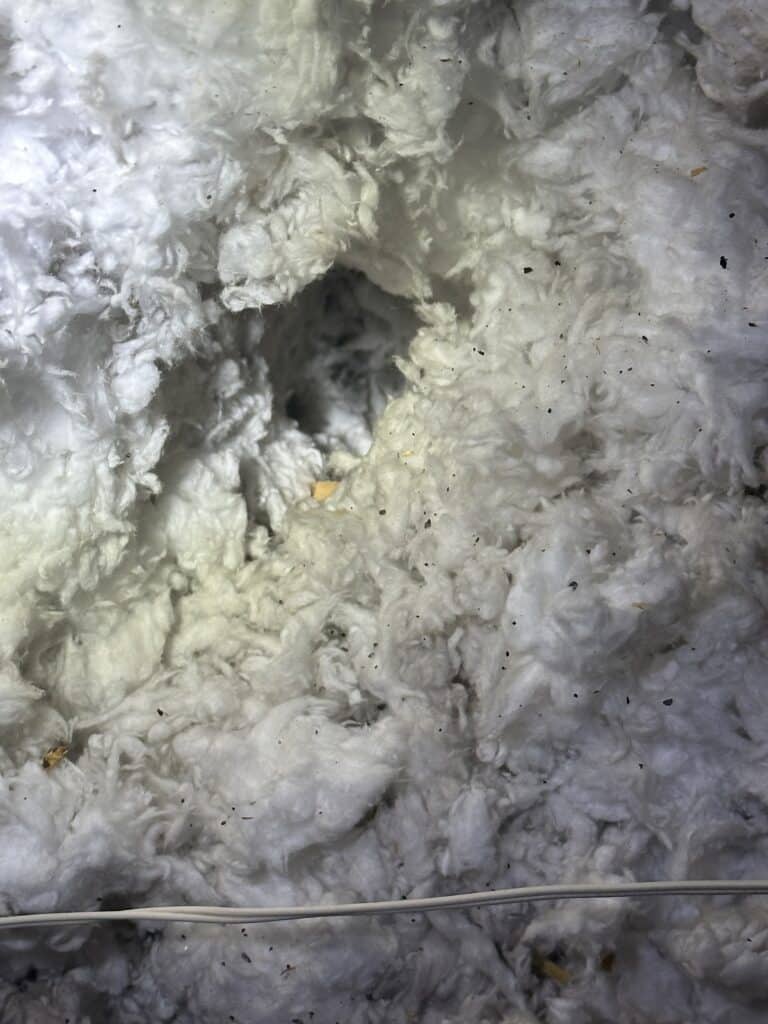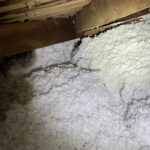By Roger Maul, Region Sales Manager for Critter Control
As Houston grows and expands, so does the risk of squirrel infestations. While they may seem cute and harmless, squirrels are responsible for significant damage to homes and infrastructure. As a professional in wildlife management, I’ve seen firsthand how these furry creatures can wreak havoc, especially in urban settings like ours. Let me walk you through some key points to remember when it comes to squirrel infestations, particularly in Houston.
The Impact of Land Development on Local Wildlife
Houston’s land development directly contributes to the displacement of native species, including squirrels. When one species is displaced, the entire ecosystem feels the effects. Squirrels, like all animals, are driven by their need for three things: food, water, and shelter. As we build new homes, offices, and infrastructure, we’re inadvertently providing these animals with more shelter, driving them into attics, vents, and even weep holes in our homes.
Squirrel Behavior and Why They Love Your Home

Squirrels are highly adaptive animals. They can jump 5 to 6 feet vertically and 8 feet horizontally, which means even if you think the tree branches are far enough from your house, they can easily find their way in. Their natural ability to chew, particularly to file down their teeth, poses a serious threat to homeowners. Texas homes commonly use PVC and PEX piping, both of which squirrels can chew through, causing costly water damage. In addition, they can gnaw on wires, leading to electrical issues or even fires.
One of the most common entry points for squirrels is the roof, especially through vents created for attic air exhaust. Weep holes, which allow ventilation in homes, are another weak spot that squirrels exploit. In Houston, with its hot and humid climate, homes are particularly vulnerable to these types of entry points.
Recognizing the Signs of a Squirrel Infestation
Most people don’t realize they have a squirrel problem until it’s too late. Because squirrels are diurnal, they’re active during the day and often spend time outside, returning to your attic at night. This sneaky behavior means you might not notice them until you hear scratching or gnawing sounds at sunset, or worse—discover plumbing issues due to chewed pipes. Other telltale signs include fresh wood exposed under paint (from chewing) or tic-tac-shaped droppings scattered around your attic.
One particularly deceptive aspect of a squirrel infestation is their ability to create paths through attic insulation without leaving obvious signs. Squirrels also leave small piles of debris where they chew and build nests.
Year-Round Problem in Houston
Unlike in colder regions, squirrels in Houston don’t hibernate. The warmer climate means that squirrels breed year-round, doubling their birthing season and multiplying their numbers at an alarming rate. This is especially true right now as land development in Houston is displacing more wildlife than ever.
Houston is home to several species of squirrels, including the gray squirrel, ground squirrel, and fox squirrel. These species are now thriving in our urban environments, creating a year-round headache for homeowners.
Squirrel Prevention: It’s Not About Chemicals or Traps
If you think the solution to a squirrel infestation is a quick spray or a trap, think again. The real preventative measures involve physically blocking off potential entry points. Sealing small holes, gaps in roofing, and weep holes are crucial steps to keep squirrels out. However, it’s important to note that common sealants like spray foam are no match for squirrels’ powerful teeth—they can easily chew right through wood.
The best solution is a professional wildlife inspection to identify potential entry points and secure your home. We at Critter Control focus on proactive strategies like sealing gaps and reinforcing vulnerable areas to prevent squirrels from entering your home in the first place.
A Delicate Balance: Protecting Wildlife and Your Home
One final point to remember: in Texas, squirrels are considered a state resource, which means they are protected by law. While they can be incredibly destructive, shooting or harming squirrels is illegal. Instead, if you suspect a squirrel infestation, it’s best to call in a professional wildlife service to handle the problem humanely and legally.
Squirrel Removal in Houston
As Houston continues to expand, the issue of squirrel infestations will only grow. It’s important to be aware of the signs and take preventative steps to protect your home. Remember, squirrels aren’t just pests; they’re part of our ecosystem, and managing them responsibly is key to preserving the delicate balance between urban development and native wildlife.
Stay vigilant, and if you hear that telltale scratching in your attic, don’t wait. Contact Critter Control to assess and address any rodent or wildlife issues before they lead to costly damage.
About the Author

Roger has over 20 years of experience in sales, management, and business development. Roger has over five years helping customers identify nuisance wildlife problems throughout Texas, Oklahoma, Louisana, New Mexico, and Colorado. As Region Sales Manager, he recruits, trains, and mentors Critter Control’s wildlife sales consultants throughout the South Central region.
If you have bats in your attic, you might notice them flying out of your attic at dusk. Observe from a distance! Watch where the bats are exiting from but avoid close contact. Bats are nocturnal, so you’ll typically see them leaving your home around dusk as they go out to forage for insects. Look for small openings around your roofline, eaves, vents, or chimney. Bats can squeeze through gaps as small as 3/8 of an inch.
Watch Bats Leaving Attics
Video from Houston and The Woodlands.
Rodents are the most commonly encountered mammal in Texas. Some of the most common rodents you’ll find in your Houston area home are:
- Norway Rats
- Roof Rats
- House Mice
- Eastern Gray Squirrels
The deer mouse, White Footed Mouse and nutria are other rodents in Houston area that can be a nuisance but aren’t as prevalent.
Homeowners in the Houston area tend to notice rodent feces or strange sounds in their walls and attics first. Rodent problems extend beyond those nuisances. Feces can transmit diseases. Rodents gnawing on electrical wires can increase the risk of fires. The pests introduce parasites like fleas into your house.
Critter Control in Houston specializes in rodent removal and control. Rodent removal begins with a thorough inspection to determine how severe the problem is. The more established rodents are, the more involved the removal process will be. After inspecting, our wildlife specialist will build a custom solution to trap, remove, and seal all entry points.
Rodent Damage in Houston



Home Inspection for Rodents
During a rodent inspection, our inspector will thoroughly inspect your attic as well as provide a full exterior home inspection. The most common signs of rodent activity are chewing, droppings, rub marks, nesting material, and small entry points.
The most common areas to find a rodent infestation are in your attic, in the crawlspace, and inside the walls. You’re likely to find evidence of rats and mice in your kitchen as they scavenge for food.
Signs of Norway Rats in Attic






Rodent Removal & Trapping
Based on the inspection, our wildlife specialist creates a strategic trapping plan to remove the rodents found in your home. Types of traps, placement of traps, and bait used in traps determine the effectiveness of rodent trapping.
Our wildlife specialist will ensure to use of the most efficient and safe removal process for your home. Though the standard rat trapping/removal duration is normally between 5 to 14 days, the trapping process may be longer if the rodents are well-established.
Rodent Control in Your Attic
There are a few ways to rodent-proof your attic, and most of them start before the rodents reach the attic. Some rodents like mice can fit through openings as small as half an inch in diameter, which means that small holes, gaps in doorways, and wall vents often serve as common entry points.
Rats are also proficient swimmers capable of traveling through sewer lines and entering buildings by emerging from toilets and open drains.
Check your roof and soffits for any small holes. Any rodent can take a pre-existing hole and gnaw it to make it bigger. Another way rodents can get into your home is through your vents. There are a few ways you can keep rodents out of your vents.
Rodent Control for the Crawl Space
Rodents can easily find their way into your crawlspaces. Norway rats and mice are the most common rodents in crawl spaces. Norway rats tend to burrow along the foundations of homes.
Rodent Exclusion
Rodent exclusion is the best rodent control method. The rats and mice got into your home. During the Critter Control free inspection in Houston and surrounding areas, our technicians identified all current and potential animal entry points.
After rodent removal, it is essential to repair any entry points on your home. Rodents leave pheromone trails, and other rodents quickly utilize those scent trails.
Habitat Modification for Rodent Control
Food sources, water sources, and shelter attract rats, mice, and squirrels to your house. Our technicians can offer simple ways to make your property less appealing to rodents.
Keep pet food inside and stored it. Removing trees or branches close to your roof and keep your property clear of debris can help to keep your property rodent free. Rodents love clutter and will use debris for nesting material.
Keep your garage door closed as much as possible, especially at dark. Garages are often used as storage spaces, and rodents will take advantage of any food they can get to or any items that can be used for nesting.
When Will I See Rodents Most?
Rats and mice are nocturnal and active year-round in Texas. Squirrels are diurnal and most likely to enter your home during their breeding seasons.
Hurricane season is the most popular time of year for Houston rodents to venture outside of their homes. However, limiting their activity to hurricane season is not entirely true. Anytime there are large rainfalls and flooding, we should be extra cautious when it comes to rodent invasion. Flooding forces rodents to venture inside.
Pest Control vs Wildlife Removal Services
Critter Control specializes in whole-home exclusions. We identify the rodent entry points and install materials designed to keep rodents out. We offer a one year warranty on whole home exclusions and suggest recurring rodent control services to keep your home protected.